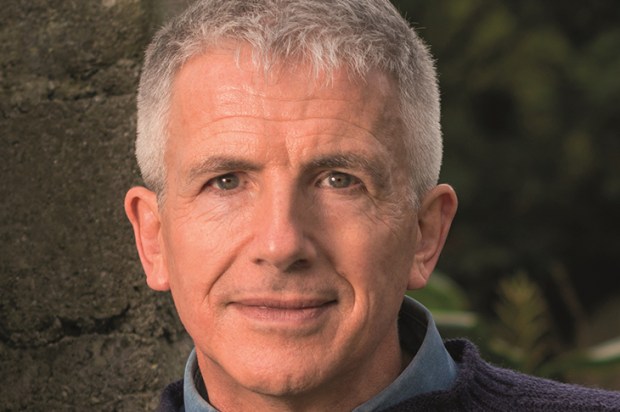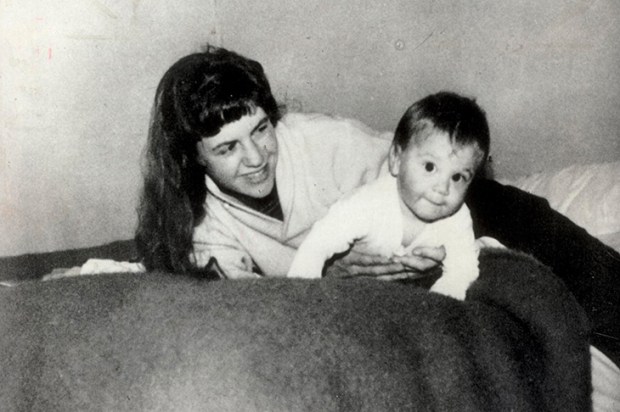The Wellcome Trust puts on some of the most engaging exhibitions in London and holds in its permanent collection a number of fine works. Its roots are in biomedical research, but those roots have, with modification, sprouted so many disciplines and areas of tangential enquiry that it makes perfect sense to have commissioned Iain Sinclair to write about the physical and psychological effects of buildings and places on the health of the people who inhabit them, pass through them, long to get out of them, represent them, think about them.
Sinclair’s approach is not that of a sociologist, an off-the-peg analyst of urbanism (density good, sprawl bad) or a travel writer on a journey to ‘find himself’ (in the way that they wearyingly will). He is, rather, in a typically oblique way, an investigator into the ashes of architectural determinism — the once fashionable notion, too readily dismissed, that design can dictate behaviour. Of course it can. But maybe not in the way that, for instance, ministers of the environment and health, mall barons, educational authorities or housing associations intend it to. Buildings change use. They acquire new connotations, new inhabitants. Fifty years of shipping containers have freed 19th-century warehouses from their original purposes and ceded them to a new bourgeoisie. Mutation and decay are recurrent themes of Sinclair’s work. He quotes Lynsey Hanley’s Estates: ‘Council houses were never intended to be holding cages for the poor and disenfranchised.’ Quite. But no government since 1979 has acknowledged it.
His method is never programmatic, most often serendipitous, constantly digressive, constantly connective. He owns a multitude of gifts. One is that he has the keenest instinct for drolly telling detail. ‘No satellite dishes here, the plague buboes of poverty,’ he writes of eastern Bloomsbury, with which he was, till beckoned by the Wellcome Trust, surprisingly unfamiliar. He doesn’t just amble through an area, some sort of passive flâneur. Walking leads to reading. He makes himself an expert in architects and inhabitants, in obscure poets and obscurer libraries, where ‘fingerprints and saturated sweat are left for generations on unopened pages’. He gets to know a place’s eulogists and deprecators, its activists and folk historians. He digs beneath the crust: a venturesome child gleefully pulling away friable stucco to reveal rotting stock bricks.
Living with Buildings most obviously differs from Sinclair’s previous books in the variety of its locations, which include Marseille, Mexico and the Outer Hebrides. This is not the first time he has ventured outside the M25; Berlin, Texas and the easternmost Midlands have been among his subjects. But the loci of his harshly funny works have usually been Hackney, Haggerston, Homerton. Places he inhabited decades before ‘creatives’ with silly beards and grave musculoskeletal problems from an epaulette in the form of a smart phone roamed a-tweetin’, quite insouciant that it is they who have caused the class clearance and gentrification they affect to abhor, and who have to an extent deprived the laureate of E postcodes of his chewy raw meat.
Far from those boroughs, life is different. On Lewis and Harris houses are treated as provisional, as expendable as the wrecked cars that constellate the landscape: ‘When a family member takes sick, the building is blamed. Turn away, put up another.’ Or just go away without telling anyone. Take the Destitution Road (built by the ennobled opium dealer James Matheson). This is not just a manifest of superstition in a society oppressed by superstition. It is a matter of survival. Much of the population of the island is so catastrophically indigent it lacks even plague buboes.
One of the sculptor Steve Dilworth’s responses to this lunar place he has lived in for many years is a fetishistic piece called ‘Hanging Figure’, which might well be in the Wellcome gallery had it not been prised from the artist by the Chicago collector Richard Harris. Would he have created such a work had he remained in his hometown of Hull, or in Kent where he lived as a young man? Is the imagination porous to its surrounds? An artist is a better gauge of this variation on nature/nurture than an accountant or bus driver: an artist has something to show, even if it is not susceptible to verbal explanation. Sinclair’s initial impression of the normally voluble Dilworth was of ‘an artist recovering votive objects for a tribe that never existed’. That is Sinclair inhabiting Dilworth, giving him a Sinclairian voice: almost idealising him as he generously idealises many of his friends and collaborators, me included. (I had no idea I was so nice. That’s worrying.)
There are in his galère no villains but many deviants who have sought, and in some instances discovered, an accommodation with the carapaces they have bricolaged around spaces, ascribing to them qualities that are imagined. A stable or a church possesses no more thought or sentiment than the stones it is built from. It is necessarily mute, unfeeling, uncaring. But it can be granted any characteristic that we elect. And those characteristics are more often than not broadly based in the flawed sensation that the mineral responds, that there is a compact: maybe benevolent, maybe not. Here is where it gets worrying for this godless materialist who believes, along with J.G. Ballard, that the greatest challenge facing humankind is where to find a parking space, and that the animists should be returned to the zoo.
Got something to add? Join the discussion and comment below.
Get 10 issues for just $10
Subscribe to The Spectator Australia today for the next 10 magazine issues, plus full online access, for just $10.
You might disagree with half of it, but you’ll enjoy reading all of it. Try your first month for free, then just $2 a week for the remainder of your first year.

![View of Marseille from the basilica of Notre-Dame de la Garde, also known as La Bonne Mère, traditionally regarded as the city’s protectress. ‘The Good Mother intervenes at sick beds, down shadowy streets, and in the dark hours of night,’ writes Iain Sinclair [image: Getty]](https://www.spectator.com.au/wp-content/uploads/2018/09/Marseille.jpg?w=730&h=486&crop=1)












Comments
Don't miss out
Join the conversation with other Spectator Australia readers. Subscribe to leave a comment.
SUBSCRIBEAlready a subscriber? Log in